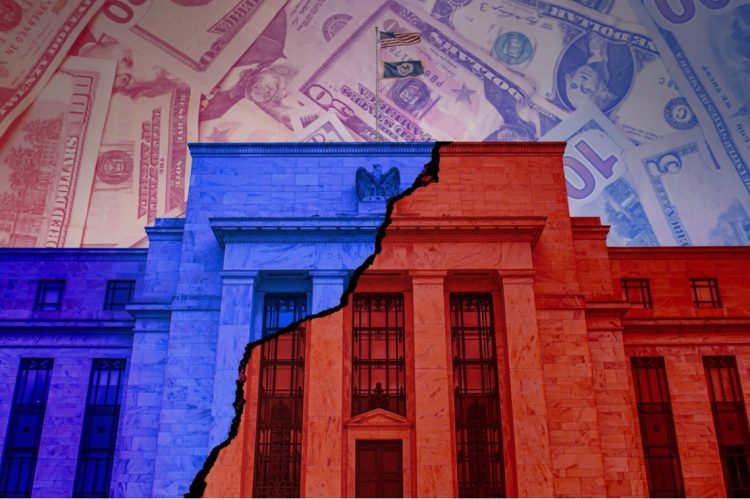Interest rates will not see a hike, nor any decrease, this week, according to the latest press conference from the Federal Reserve’s Federal Open Market Committee (FOMC).
The official statement from the FOMC read: “The Committee seeks to achieve maximum employment and inflation at the rate of 2% over the longer run. In support of these goals, the Committee decided to maintain the target range for the federal funds rate at 5.25% to 5.5%. The Committee will continue to assess additional information and its implications for monetary policy.”
“Since early last year, the FOMC has significantly tightened the stance of monetary policy,” explained Fed Chair Jerome Powell. “The stance of policy is restrictive, meaning that tight policy is putting downward pressure on economic activity and inflation, and the full effects of our tightening have yet to be felt.”
Powell further explained that while there has been growth and good economic signs, it is not enough data to warrant any current change. “Inflation has come down, but it’s well above our 2% target. The labor market has been rebalancing, but it’s still very tight by many measures. GDP growth has been strong, although many forecasters are forecasting that it will slow.”
In short, Powell explained that the committee is looking for more consistent growth than what has occurred.
As Powell mentioned, the GDP reported astonishing growth in Q3 2023. As RISMedia recently reported, “Real gross domestic product (GDP), the most accurate measure of a country’s broad economic growth, defied expectations in the third quarter, showing the economy grew at an annualized pace of 4.9%.”
Experts such as Dr. Selma Hepp, chief economist for CoreLogic, explained that this growth has both positives and negatives.
“The good news is that Federal interest rate policy is slowing inflation while also keeping unemployment numbers low and consumer spending strong,” said Hepp. “On the flip side, new homebuyers will face higher mortgage payments for the foreseeable future.”
As for December and the coming months of 2024, Powell stated that the committee has yet to make any future decisions without being able to glance at the data. However, he did say that a stop in rate hikes now doesn’t mean there will not be another in the future.
In conclusion, Powell stated that “My colleagues and I remain squarely focused on our dual mandate to provide maximum employment and stable prices for the American people. Given how far we’ve come, along with the uncertainties and risks we face, the committee is proceeding carefully”
What the experts have to say
Danielle Hale, chief economist for Realtor.com, commented that “The Federal Reserve’s Open Market Committee, the rate-setting body that meets roughly eight times per year, voted to hold the short-term policy rate steady at a range of 5.25 to 5.5 percent. Despite a surge in hiring in September and well above trend economic growth in the third quarter, financial conditions have tightened as longer term rates have increased. The benchmark 10-year treasury yield has risen a whole percentage point since the beginning of the third quarter, even though the Fed raised the Fed Funds rate just once in this period–following its July meeting. A shift in the outlook for the policy rate in the September FOMC projections, served to guide market expectations, and an increase in the supply of longer-term Treasury bonds at the same time that the Fed is curtailing its balance sheet catalyzed rates higher. In addition, the Fed’s current policy stance remains restrictive, with the cumulative monetary tightening in the Fed funds rate 525 basis points or 5.25 percentage points since the March 2022 liftoff.”
Hale concluded, “The Fed’s primary focus continues to be taming inflation and bringing it back to the 2% target. While we’ve seen solid progress on inflation in the third quarter, monthly readings have trended higher in August and September, and I expect the Fed to keep the option for an additional future rate hike on the table, even if the odds it will need to exercise that option are low. As long as a rate hike is on the table, investors are likely to position cautiously, and the tendency for rates to remain steady to slightly higher remains. ‘Improvement’ in the data–more lukewarm readings on the economy and lower readings on inflation–will be more important drivers of lower rates. Friday’s job report could serve that purpose, building on the weaker manufacturing data and steady job openings and labor turnover data out earlier this week.”
Mortgage Bankers’ Association SVP and Chief Economist Mike Fratantoni commented that “The FOMC left the federal funds rate target unchanged at the November meeting and did not show any indication of a move at its next meeting in December. Many Fed officials in recent weeks have indicated that rates were high enough now that they could pause. Inflation is slowing, but not yet back to the 2% target range. This is the most important metric the Fed is watching right now. Even though third-quarter economic growth came in quite strong, and several job market indicators continue to show strength, so long as inflation continues to come down, the Fed is likely to pause at this level for some time. We expect its next move will be a cut in next year’s second quarter.
“The housing and mortgage markets are at a standstill. Mortgage rates near 8%, coupled with a lack of inventory, are impairing affordability, even as new home construction picks up speed,” Fratantoni continued. “If the Fed does indeed move to cut rates next year and signals its intent to do so, mortgage rates should trend downward. Our forecast calls for this to happen, which would support a somewhat stronger spring housing market.”
Fratantoni concluded, “We continue to think that the risks are to the downside for the economy and expect a slowdown in the first half of next year. It’s also worth noting that heavy debt issuance from the Treasury, a consequence of large and rising federal deficits, is also contributing to higher rates.”












